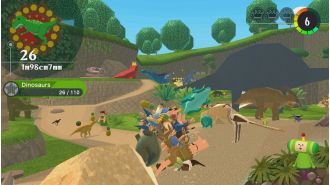Android and iOS Demographics In The US
On friday, as I ate a bowl of soup for lunch, I pulled out two phones, an iPhone and my Android. I opened up the app stores and went to the leaderboards. And I looked at the top free apps on both phones. They were radically different. That got me thinking about the different user bases on these two operating systems here in the US.
So as I finished my soup, I opened up a google spreadsheet and entered the top forty apps in both stores. I then shared with Brian who likes to look at stuff like this, and then I posted a link to it on usv.com so that others could see what we were up to. I am hoping that we can start using our website to publicly share the things we are thinking about and working on inside USV more often. The benefit of doing that is Kevin Marshall built a script to pull this kind of data out of App Annie and into a .csv file. Thanks Kevin. I will use that next time I want to do this kind of work.
I took a little liberty with the categories. If an app is useless without friends on it, I called it social (not photo, not video, not communication). If an app is used for shopping, I called it shopping (not lifestyle). I collapsed a number of categories into a category I called utility. The spreadsheet is here in case you want to look at it.
Here is some interesting data that comes from this work (remember that this is US only):
1) There are only 14 apps that overlap on both top forty lists. They are (in their order of popularity on Android):
facebook, pandora, instagram, candy crush, bitstrips, snapchat, skype, kik, twitter, pet rescue, whats app, deer hunter, despicable me, vine
You will notice that these are primarily the top social apps where friends drive adoption, not app store distribution. All of the social apps in the top 40 on iOS are top 40 on Android.
There are 26 apps that are top 40 on iOS and not on Android. And the same with Android. If you are not a social app, being top 40 on iOS does not mean you will be top 40 on Android and visa versa.
2) There are 15 games in the top forty on iOS with an average position of 19 and there are 12 games in the top forty on Android with an average position of 22. Five of the top 10 on iOS are games. Only one of the top 10 on Android is a game. This could be a function of the popularity algorithm that Apple uses, but it sure feels like iOS users are more into games than Android users.
3) Nine of the top 40 apps on Android are utilities vs three of the top 40 on iOS. This really jumped out at me when I was looking at lunch.
4) The two top 40 shopping apps on Android are eBay and Amazon. The three top 40 shopping apps on iOS are Groupon, Black Friday, and Target Cartwheel. No overlap there at all.
What I take from this work is that if the popularity algorithms on iOS and Android are similar (I don't know), then the user bases for these two operating systems in the US are fairly different. That may be true even if the algorithms work differently.
The picture that emerges for me is Android users are a "barbell" with young pre-teens and teens using cheap phones that won't cost a lot to replace when they are lost or destroyed and old folks like me who want a large screen and care more about utility than having fun. iOS owns the college kids, the post college kids, and the folks who getting married and starting familes. My bet is Android is sub 18 and post 40 and iOS is the 18 to 40 crowd.
I assume that there have been demographic surveys on this. I just haven't seen them. If there is data out there on this, I'd like to see it. Please leave a link in the comments. I think this has a lot to do with how developers should think about what platforms to launch on and what platforms to support in the near term. It also has impact on your distribution strategy. If you have a social app, you can build a large user base on iOS and then turn that into a large user base on Android fairly easily, as we saw with Instagram last year.






